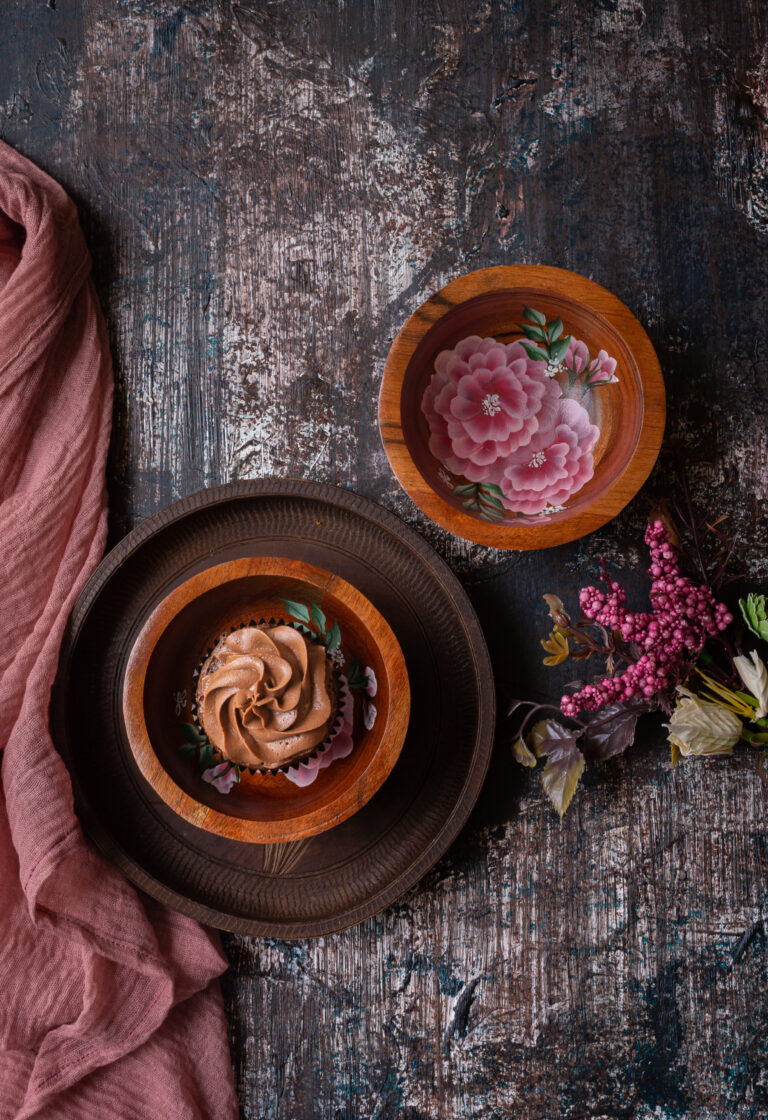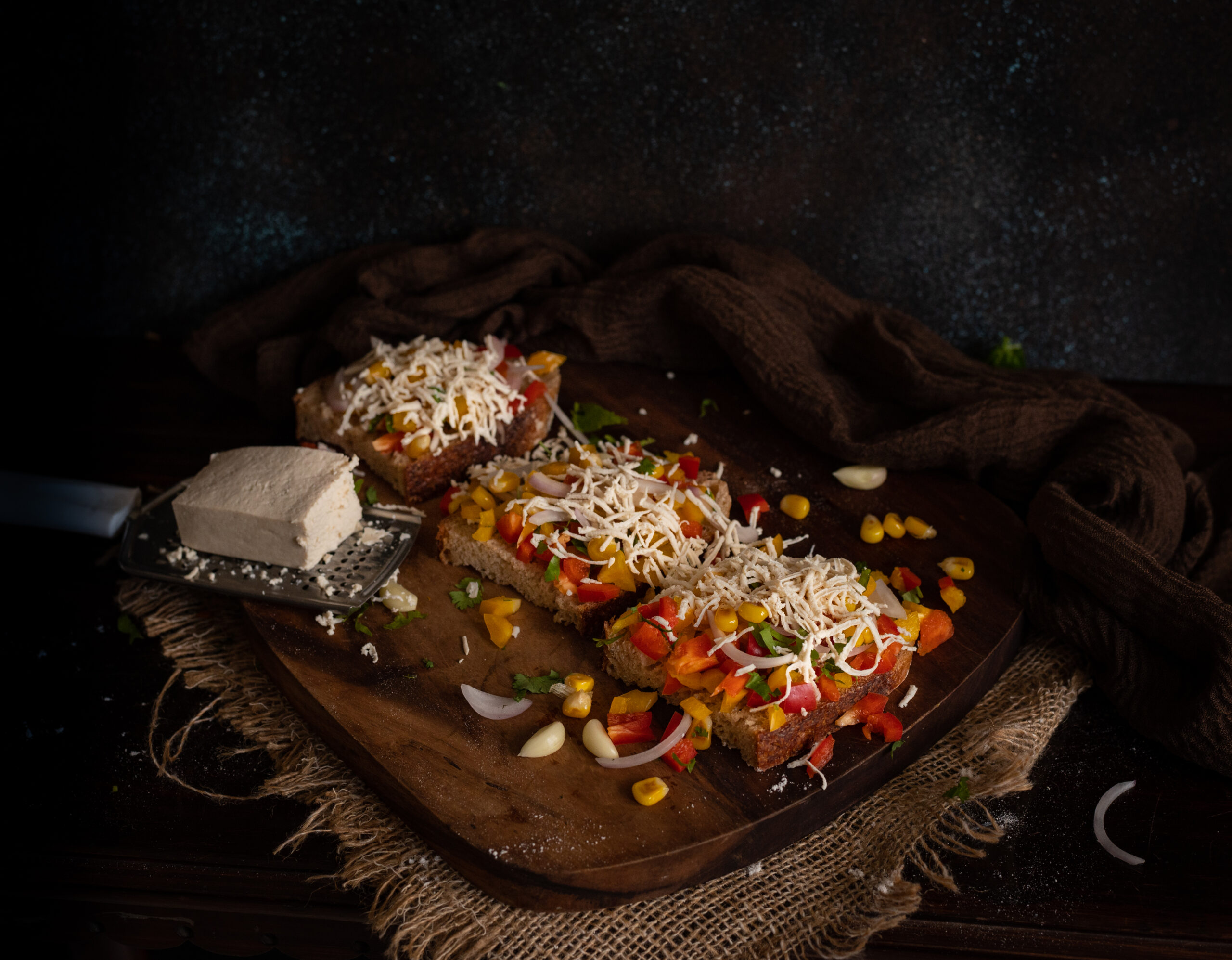I don’t believe in Valentine’s Day. That’s the reason why you’ve never seen the occasion observed on this blog with a special recipe, even though you know that love is the key ingredient in every dish I create! This year is different, however. The COVID-19 pandemic had brought all my children back home for the first time in ages. Despite all else, it gave us the rare opportunity of being able to have almost a year of each other’s constant company, that too with everyone working from home. Then, right on the cusp of Valentine’s Day, all three of them flew off again, returning to the respective cities in which they are based. I am experiencing all the emotions of having an empty nest, and I need to express them through the way I know best. So here I am in my kitchen, feeling wistful as I lay the ingredients out for some very special cupcakes. This post is a valentine in red velvet, a symbol of a mother’s love.
Through the many months that my kids were back home, they would ask for “a special cake” every other day. Red velvet was one of their favourites in this category, but it was rarely baked at home during the pandemic. I am extremely particular about the ingredients I use, and not being able to source the particular brand of red colouring I prefer meant that this was off the repertoire. As you must have noticed too, accessibility to goods had finally returned to a normal standard here in Chennai, and a beautiful bottle of red colouring now sits on my shelf, ready to bring vibrance to these Valentine’s Day cupcakes.

This one is for my youngest, my daughter, whose hands modelled for my photoshoots through the year. If she wasn’t up for it, I would threaten to withhold a slice of the day’s cake from her, which always did the trick. I often joke with her that my recipes are my prized heirlooms, but it is no joke at all that one of the reasons I compile them this way has always been for my children. My daughter is an excellent baker, and was in fact the one who inspired me to become one too, but she is also a busy young woman and rarely bakes these days. I hope she reaches for this recipe, the next time that she does.
This one is for my second son, my unofficial marketing man, who is so proud of my work and never fails to put a good word in for his mother’s cakes no matter where he goes. He doesn’t cook, unfortunately, but I hope he will pick up this wonderful activity some day. If that day comes, there is an archive right here for anything his heart or his tummy desire.
This one is for my elder son, my partner in the business and a valuable critic whose opinion matters to me very much. He loves cooking, and has just as much of culinary inquisitiveness as I do, and I hope that this recipe becomes a keeper for him.

This one is also for you. I know that many other parents who had their grown kids return and stay unexpectedly last year have felt or are feeling the same pangs that I am. I hope that baking these scrumptious cupcakes will offer you some comfort too. For me, what I noticed is that in the past – when they were away for their education or their work – these pangs were not as intense. They were adults with their own routines, just as I had mine, and I was used to seeing them at only certain occasions. But having this one year that felt like it was just dedicated to family, to catching up with each other on a deeper level, to reinforcing the values we instilled in them and live by… It was a very different experience. Perhaps you can relate to this too.
One day, hopefully sooner than later, when the world fully opens up again, I look forward to jetting off to see my three valentines just as often as always. If ever you bump into me at an airport, carrying big boxes in my hand luggage, you will know what’s in them. My precious baked goods are making their way with me to my children and their friends. Until then, and for long after, this recipe will always be here for them, whenever they want to recreate for themselves the taste of my love.

Red Velvet Cupcake
(Yield: 12 cupcakes)
For the cupcakes:
1 ¼ cups maida
3 tablespoons corn flour
2 tablespoons unsweetened cocoa powder
1 cup sugar
¼ teaspoon salt
½ teaspoon baking soda
¼ cup oil
¼ cup unsalted butter
1 tablespoon red food colouring
¾ cup whole milk (room temperature)
1 tablespoon (+ ½ teaspoon) vinegar
1 egg
1 teaspoon vanilla extract
For the cream cheese frosting:
1 cup cream cheese (room temperature)
¼ cup butter
2 cups icing sugar
¼ teaspoon vanilla extract

To prepare the red velvet cake cupcakes, preheat the oven to 170°C. Prepare 12 cupcake liners in the pans. You may want to check out this comprehensive introduction to baking, if you need to.
In a bowl, mix and sift together all the dry ingredients – flours, salt, baking soda and cocoa powder. Set aside.
In another bowl, add the milk and 1 tablespoon of vinegar and set aside. This becomes buttermilk.
In a large mixing bowl, use an electric mixer to cream together the butter and sugar on medium speed for 4-5 minutes, until the mixture is light and fluffy. Add the egg, and beat it in well. Next, add the oil, red food colouring, vanilla extract and the remaining ½ teaspoon of vinegar.
Add in the blended dry ingredients from the first bowl a little at a time, alternating them with the prepared buttermilk. Do not over-mix, and be very gentle.
Distribute the cake batter into the lined pans evenly. Bake for 15-18 minutes or until a skewer comes out clean. Remove the pans from the oven and cool on a wire rack.
To make the cream cheese frosting, use an electric mixer to beat the cream cheese until it is smooth. Add the butter and mix until the two are well-combined and smooth. Then, add the powdered sugar and vanilla extract, making sure the sugar doesn’t fly around. Beat until fluffy. There may be quantity variants based on the brand of sugar used, so add more or less to suit your requirement or until the icing is stiff enough.
Top the cooled cupcakes with a swirl of cream cheese frosting, and garnish with sprinkles for a celebratory touch.
This recipe has a generous yield quantity and is meant to be shared. I hope that you will enjoy these sweet delights with those who are most precious to you, during some cherished moments together. I’ve given the recipe away simply as a gesture of joy and camaraderie, but it is also on the re:store menu. If you’d prefer to order some red velvet cake or cupcakes from me, or perhaps any other delectable item from my array of goodies, please drop me a note. The pantry is fully stocked, the kitchen is thriving with scents and flavours, the house is quiet now – and I would simply love to bake for you!













































